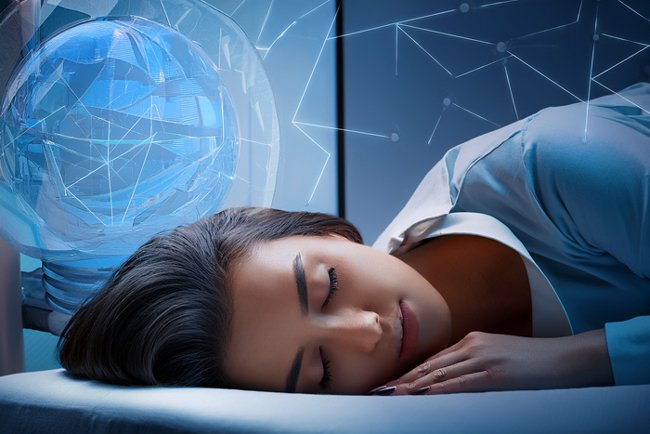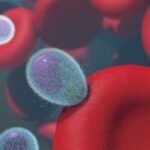Explore the science of sleep cycles and learn tips to enhance restorative sleep for better health, productivity, and well-being. Sleep isn’t just shutting down for the night—it’s a vital process that benefits your physical, mental, and emotional well-being. Did you know we spend about one-third of our lives asleep? Yet, for something so vital, sleep often gets overlooked in our hustle-driven world. By understanding the science behind it and making sleep a priority, you can unlock a healthier, more productive version of yourself.
The Sleep Cycles: Decoding the Stages
Sleep happens in cycles, each lasting about 90 minutes, and every stage plays a specific role in restoring your mind and body:
- Non-Rapid Eye Movement (NREM) Sleep:
- Stage 1: This is the light, transitional sleep where your body relaxes and brain activity slows. It lasts just a few minutes.
- Stage 2: Stabilized light sleep. Heart rate decreases, body temperature drops, and your brain produces sleep spindles—bursts of activity that help protect you from waking easily. This stage accounts for about 50% of your total sleep.
- Stage 3: Deep sleep, or slow-wave sleep, is when your body carries out vital physical restoration, tissue repair, and immune strengthening.
- Rapid Eye Movement (REM) Sleep:
- This phase begins about 90 minutes after you fall asleep. REM sleep is associated with vivid dreams and plays a key role in memory consolidation, emotional processing, and cognitive function.
- Light Sleep:
- Light sleep encompasses Stages 1 and 2 and makes up 50-60% of the night. Though not as restorative as deep sleep or REM, it’s essential for transitioning between these stages and ensuring a balanced sleep cycle.
How the Stages Alternate Throughout the Night
Sleep is not a static state; it’s a highly dynamic process where different stages weave together to restore your body and mind. Over the course of a night, you typically progress through 4-6 sleep cycles, each lasting around 90 minutes. Here’s how these stages alternate and evolve:
- The Early Night: The first few cycles of sleep are dominated by deep sleep (Stage 3 NREM). This is when your body focuses on repairing tissues, strengthening the immune system, and releasing growth hormones. Deep sleep is at its peak during the earlier part of the night, ensuring your body gets the physical restoration it needs.
- Transitioning Through Light Sleep: Light sleep (Stages 1 and 2 NREM) acts as a gateway, transitioning you between deep sleep and REM sleep. It makes up the largest portion of your sleep, ensuring a steady rhythm throughout the night. This phase stabilizes your sleep cycles and shields you from abrupt awakenings.
- The Rise of REM Sleep: REM sleep becomes more dominant in the later part of the night. Early REM phases are shorter, but as the night progresses, they lengthen with each cycle. This stage is critical for processing emotions, consolidating memories, and supporting brain health.
- The Balance of Cycles: Each cycle is carefully orchestrated: the early night prioritizes deep sleep to repair the body, while the later cycles focus more on REM sleep for mental and emotional rejuvenation. Light sleep ensures smooth transitions between these two restorative phases, keeping your sleep balanced and cohesive.
This seamless alternation of stages is what makes sleep so restorative. By cycling through these phases in harmony, your body and mind wake up feeling refreshed, rejuvenated, and ready to tackle the day.
How Much Sleep Do You Really Need?
Your age and lifestyle determine how much sleep you need. Here’s a quick breakdown:
| Age Group | Recommended Sleep |
| Newborns (0-3 months) | 14-17 hours |
| Infants (4-11 months) | 12-15 hours |
| Toddlers (1-2 years) | 11-14 hours |
| Preschoolers (3-5 years) | 10-13 hours |
| School-age Children (6-13) | 9-11 hours |
| Teenagers (14-17 years) | 8-10 hours |
| Adults (18-64 years) | 7-9 hours |
| Older Adults (65+ years) | 7-8 hours |
Consistently sleeping less than recommended can result in sleep debt, which over time can impact your physical and mental health.
Time Spent in Each Sleep Stage
For a healthy adult, the distribution of time across sleep stages typically looks like this:
- Light Sleep: 50-60% of the night, spent mainly in stabilized light sleep (Stage 2).
- Deep Sleep: 15-25% of total sleep, mainly concentrated in the early part of the night.
- REM Sleep: 20-25%, increasing in the later half of the night.
Why You Should Stick to a Sleep Schedule
A regular sleep schedule keeps your internal body clock—your circadian rhythm—in sync. This rhythm regulates your energy levels, mood, and even hormone production. Sticking to consistent bedtimes and wake-up times ensures better sleep quality and reduces the risk of “social jet lag,” caused by irregular patterns.
The Case for Sleeping More, Not Less
It might seem like cutting back on sleep creates more time in your day, but the truth is that sleeping less harms your overall productivity and well-being. Here’s why:
- Physical Health: Sleep allows your body to repair and rejuvenate. Chronic deprivation can lead to issues like heart disease, diabetes, and weakened immunity.
- Mental Clarity: Without sleep, memory, problem-solving, and focus suffer.
- Emotional Stability: Restful sleep reduces stress and builds resilience against mood disorders.
- Energy and Productivity: Well-rested people accomplish more in less time, thanks to better energy and creativity.
Sleep-Deprivation Recovery Tips
If you’re sleep-deprived, try these steps to bounce back:
- Prioritize Sleep: Go to bed earlier or take short naps (20-30 minutes).
- Stick to a Routine: Reset your body’s internal clock with consistent timings.
- Optimize Your Environment: Use blackout curtains, keep your room cool, and minimize noise.
- Fuel Yourself Wisely: Choose nutrient-rich foods and avoid caffeine in the afternoon.
Breathing Exercises and Meditation for Better Sleep
Struggling to relax at night? Breathing exercises and meditation can help calm your mind and ease the transition to sleep:
- The 4-7-8 Breathing Technique:
- Inhale deeply through your nose for 4 seconds.
- Hold your breath for 7 seconds.
- Exhale slowly through your mouth for 8 seconds. Repeat this cycle 4-5 times, focusing on the rhythm. It helps slow your heart rate and relax your body.
Pair this technique with a simple meditation practice, like focusing on your breath or trying guided meditation before bed. These practices promote relaxation and prepare your body for restful sleep.
For an in-depth guide, explore my article: [Meditational Breathing: Your Key to Calm, Clarity, and Vitality].
Supplements to Enhance Sleep
Certain supplements can help during periods of sleep disruption:
- Melatonin: Regulates sleep cycles, especially helpful during jet lag.
- Magnesium: Calms the nervous system and aids relaxation.
- Valerian Root: Promotes relaxation and reduces anxiety.
For more information on supplements, see my article: [Unlocking Wellness: Benefits of Quality Sleep and How to Enhance It].
Breaking Free from the Sleep-Deprived Cycle
Falling into a pattern of sleep deprivation can be challenging, but it’s possible to break free:
- Identify the Cause: What’s contributing to your sleep issues? Stress, late-night habits, or irregular schedules?
- Set a Routine: Stick to fixed bedtimes and wake-up times, even on weekends.
- Embrace Power Naps: Keep naps short (20-30 minutes) to avoid disrupting nighttime sleep.
- Adopt a Wind-Down Routine: Use calming techniques like the 4-7-8 breathing method.
- Adjust Gradually: If your schedule is off-track, shift your bedtime earlier by 15-30 minutes nightly.
The Ultimate Productivity Booster: Sleep
Contrary to popular belief, less sleep doesn’t mean more productivity—it means less clarity, focus, and energy. Sleep is your ultimate ally in achieving success. By prioritizing rest, sticking to routines, and incorporating breathing exercises or meditation, you’re investing in a brighter, more balanced future.
Transforming Rest: Tools to Optimize Your Sleep Experience
Enhance your sleep with these targeted products:
Sleep Environment Enhancers
- Blackout Curtains: Block out light for a dark, sleep-friendly room. [View on Amazon]
- White Noise Machines: Mask background noise for undisturbed rest. [View on Amazon]
- Aromatherapy Diffusers: Use calming scents like lavender to relax. [View on Amazon]
Comfort and Relaxation Accessories
- Weighted Blankets: Ease anxiety and promote deep sleep. [View on Amazon]
- Cooling Pillows: Maintain a comfortable temperature for hot sleepers. [View on Amazon]
- Silk Eye Masks: Block light gently for better rest. [View on Amazon]
Sleep and Wellness Tech
- Sleep Trackers: Monitor sleep patterns and gain actionable insights. [View on Amazon]
- Sunrise Alarm Clocks: Mimic natural light to regulate your wake-up rhythm. [View on Amazon]
Helpful Supplements
- Melatonin: Adjust your sleep-wake cycle. [View on Amazon]
- Magnesium: Relax the nervous system and reduce stress. [View on Amazon]
- Valerian Root: Calm restlessness and improve sleep. [View on Amazon]
Meditation and Breathing Tools
- Apps like Calm or Headspace: Access guided sleep meditations.
- Breathing Tools: Devices like Resperate enhance relaxation.
Note: This page contains affiliate links. If you make a purchase through these links, we may earn a small commission at no additional cost to you. Thank you for supporting our work!
Here are some references for further reading on sleep science and restorative sleep:
- Sleep’s Restorative Theory: Exploring the Psychology Behind Repair and Restoration – A detailed exploration of the restorative theory of sleep and its impact on physical and mental health.
- Restoration Theories of Sleep – A comprehensive look at how different stages of sleep contribute to brain and body restoration.
- Molecular and Cellular Mechanisms of the Restorative Effects of Sleep – Insights into the biochemical processes that occur during sleep, supporting energy metabolism and neuroplasticity.










